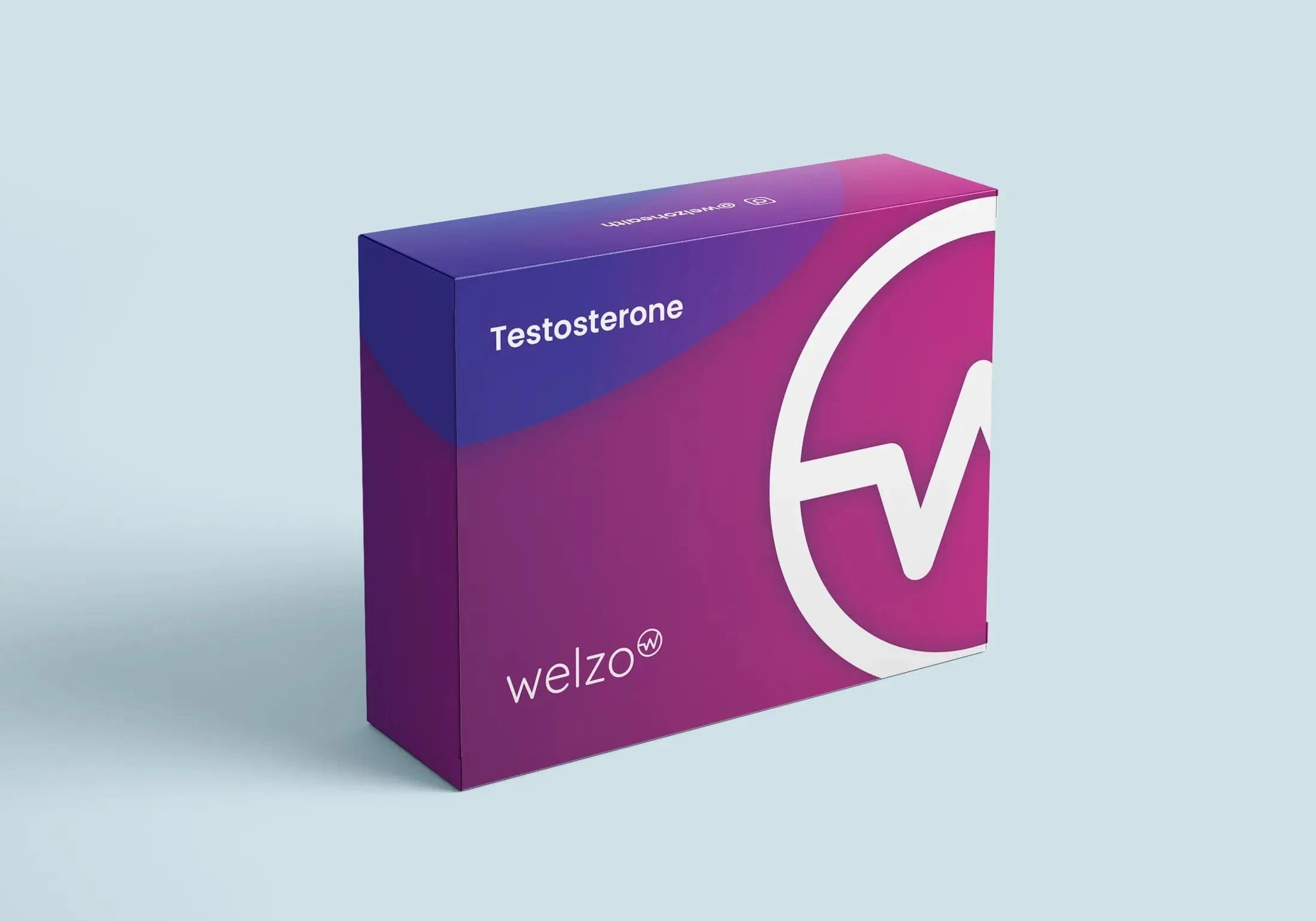Testosterone and Osteoporosis: Causes, Diagnosis, and Bone Health


The endocrine system, a collection of glands that produce hormones, plays a pivotal role in regulating our bone metabolism. For example, hormones like parathyroid hormone and calcitonin are instrumental in balancing calcium levels, vital for bone health. "The balance of hormones produced by the endocrine system directly impacts the health and integrity of our skeletal system", Dr. Clara Williams, a leading endocrinologist in London. To exemplify this, consider how growth hormone during our younger years stimulates bone lengthening, ensuring that we grow taller.
Testosterone, commonly recognised for its role in male reproductive health, is also instrumental in maintaining bone density and strength. In bone, testosterone promotes osteoblastic activity (bone-building) and reduces osteoclastic activity (bone resorption). "Adequate levels of testosterone can mean the difference between robust bones and frail ones that easily fracture", Dr. John Smith, an osteopath in Bristol. A study conducted in 2018 revealed that men with hypogonadism, a condition characterised by low testosterone, often exhibit lower bone density.
Estrogen, primarily known as a female hormone, also has a role in male bone health. Testosterone in males can be converted to estrogen, which in turn has been linked to effective bone mineralization. Both hormones work synergistically in men to maintain healthy bones. "While testosterone bolsters bone formation, estrogen acts as a protector against excessive bone resorption. This partnership is crucial for skeletal harmony", says Dr. Samantha Brooks from Cardiff.

Buy Testosterone Blood test online here.
When testosterone levels dip, it triggers a cascade of events detrimental to bone health. Reduced bone-building activity, combined with unchanged or even heightened bone resorption, can lead to osteoporosis. This condition makes bones porous and more prone to fractures. "Low testosterone isn't just about diminished virility or energy; it can be the silent harbinger of brittle bones", states Dr. Martin Greene of Edinburgh.
Many are familiar with menopause in women, but fewer acknowledge its male counterpart: andropause. Andropause, characterised by a gradual decline in testosterone, often manifests in men around their 50s. The decline can be linked to reduced bone density and an increased risk of osteoporotic fractures. "Andropause is a natural phase, much like menopause. However, its implications for bone health are often under-discussed and under-diagnosed", says Dr. Helena Wright, a gerontologist in Birmingham.
Bone remodelling is a continuous process of formation and resorption. However, with testosterone deficiency, there's a tilt towards resorption, making bones thinner over time. "Think of it as a construction site," Dr. Robert Fitzgerald of Newcastle describes, "With low testosterone, you've fewer builders (osteoblasts) and more demolishers (osteoclasts). Over time, this imbalance jeopardises the structure."
As men age, a gradual decline in testosterone is natural. By the age of 70, testosterone levels may be just half of what they were in younger years. "The drop in testosterone isn't a disease but a natural ageing process. However, its impact on bones warrants attention, especially in older individuals", says Dr. Lisa Marshall of Liverpool.
Certain lifestyle factors can hasten testosterone decline. Chronic alcohol consumption, smoking, excessive stress, and a sedentary lifestyle have all been linked to lower testosterone. For instance, a 2019 study found that men who smoked had a 15% higher chance of faster testosterone decline than non-smokers.
Several medical conditions, such as pituitary gland disorders or testicular injuries, can affect testosterone production. Moreover, treatments like chemotherapy or radiation can also temporarily or permanently reduce testosterone. "It's a complex web," says Dr. Ahmed Iqbal of Leeds, "Medications, treatments, or underlying conditions can indirectly lay the foundation for osteoporosis by tampering with testosterone levels."
Osteoporosis is often dubbed the "silent disease" because it can develop for years without manifesting any noticeable symptoms. By the time patients present with symptoms, osteoporosis may have already progressed significantly. It's only when complications like fractures occur that individuals become aware of their compromised bone health.
Fractures, especially in the hip, wrist, or spine, in the absence of significant trauma, can be indicative of osteoporosis. "A minor fall resulting in a fracture, particularly in older men, should prompt a deeper investigation into bone health and potential testosterone deficiency", notes Dr. Sean Foster, an orthopaedic surgeon in Manchester.
Aside from fractures, there are other subtle signs of osteoporosis. Gradual height loss, persistent back pain, or a noticeable hunch in one's posture can all hint at deteriorating bone health. "I've seen patients lose several centimetres in height over a decade due to undiagnosed osteoporosis and related vertebral compressions", recounts Dr. Natalie Clarke, a GP in Birmingham.
The DXA scan remains the gold standard for diagnosing osteoporosis. By measuring the bone mineral density of the hip and spine, it provides valuable insights into bone strength and fracture risk. "DXA doesn't just diagnose osteoporosis; it's pivotal in monitoring the efficacy of treatments too", as Dr. Jonathan Blake, an endocrinologist in Oxford.
Serum testosterone tests help doctors gauge both bound and unbound (free) testosterone in the blood. "Understanding testosterone levels is crucial when assessing bone health in men, as there's a direct relationship between the two", explains Dr. Hannah Lewis from Leeds.
Besides DXA and testosterone tests, doctors might also recommend additional assessments. Bone turnover markers, for instance, shed light on the rate of bone formation and resorption. CT scans can provide 3D images of bone architecture, while ultrasounds can assess bone density at peripheral sites, such as the heel.
For men with hypogonadism, TRT can be a game-changer. By restoring testosterone levels, TRT can improve bone density, muscle mass, and overall quality of life. "While TRT can be transformative, it's essential to weigh its benefits against potential risks, like sleep apnea or cardiovascular issues", warns Dr. Karen Adams, a geriatrician in Newcastle.
Bisphosphonates, like alendronate, and Selective Estrogen Receptor Modulators (SERMs) are standard treatments for osteoporosis. When combined with adequate testosterone levels, they can synergistically bolster bone health. "While testosterone boosts bone formation, medications like bisphosphonates inhibit bone resorption. Together, they present a comprehensive strategy", explains Dr. Martin Shaw, a pharmacologist in Glasgow.
Beyond medication, lifestyle interventions play a significant role in bone health. Adequate calcium and vitamin D intake, weight-bearing exercises, and quitting smoking can all stave off bone loss. "A balanced diet, rich in leafy greens, dairy, and lean proteins, paired with regular exercise, can significantly offset age-related bone decline", advises Dr. Sarah Miles, a nutritionist in Liverpool.
Reaching optimal bone mass in one's youth acts as a buffer against potential bone loss later in life. "Achieving the highest bone density possible in the teenage and early adult years can be seen as 'banking' bone for the future", highlights Dr. Simon Gallagher, an orthopaedic surgeon based in London. It is a natural protective measure against conditions like osteoporosis, especially when testosterone levels start to decline in later years.
Healthy testosterone levels have implications far beyond bone health, affecting mood, muscle strength, and more. "Regular exercise, a balanced diet, adequate sleep, and stress management are all essential components in maintaining healthy testosterone levels throughout life," says Dr. Helen Turner, an endocrinologist from Bristol.
Dietary supplements play a significant role in preventing osteoporosis. Calcium and Vitamin D are fundamental, but there's more to the story. "While Calcium and Vitamin D are at the forefront, magnesium, Vitamin K, and omega-3 fatty acids are also vital for optimal bone health", according to nutritionist Dr. Fiona Roberts from Cambridge.
Recent research has ignited excitement around stem cells' potential role in treating osteoporosis. "Emerging studies hint at the possibility of using stem cells to regenerate bone and combat osteoporosis, especially when linked to testosterone deficiency," states Dr. George Kennedy, a researcher at Oxford University.
The field of diagnostic technologies is ever-evolving, with tools that offer even more precise insights into bone health. "New technologies not only measure bone density but can also predict fracture risks and monitor bone quality, offering a comprehensive view of one's skeletal health", states Dr. Lucy Owens, a radiologist from Leeds.
As our understanding of testosterone's role in osteoporosis deepens, novel treatments are emerging. "Beyond the traditional TRT and bisphosphonates, new avenues, including targeted gene therapies and hormonal modulators, show promise in treating testosterone-induced osteoporosis," comments Dr. Neil Patel, an endocrinologist in Edinburgh.








Plus get the inside scoop on our latest content and updates in our monthly newsletter.